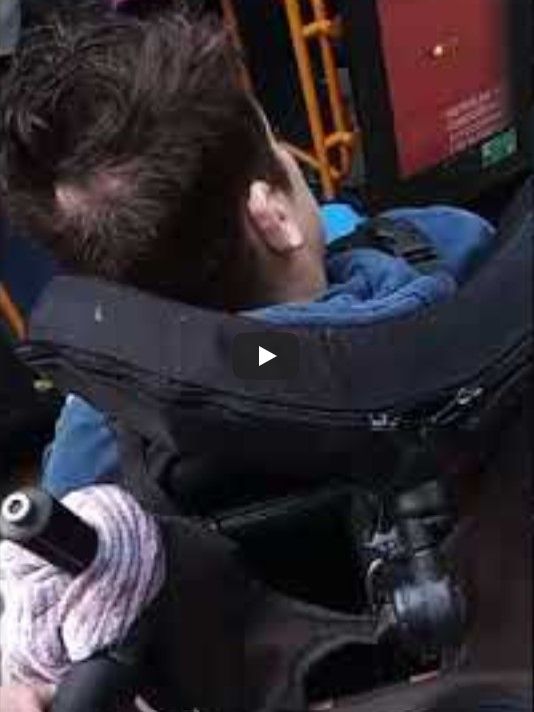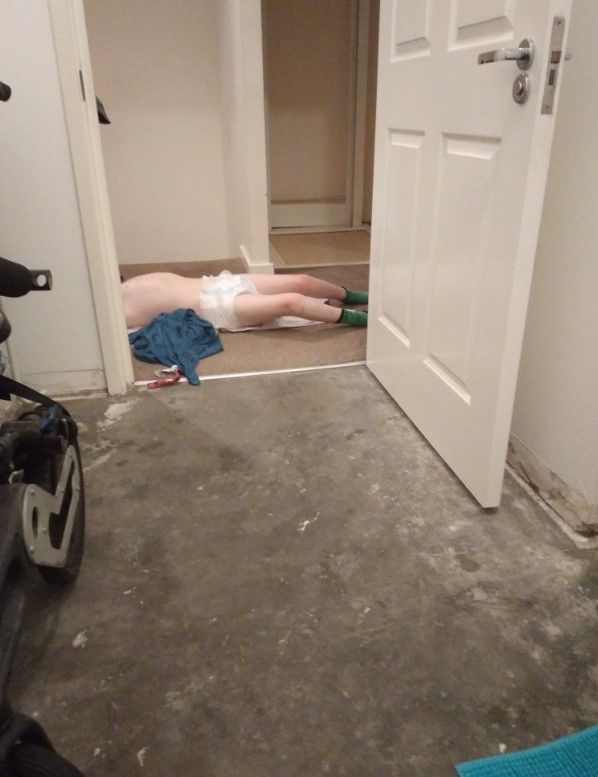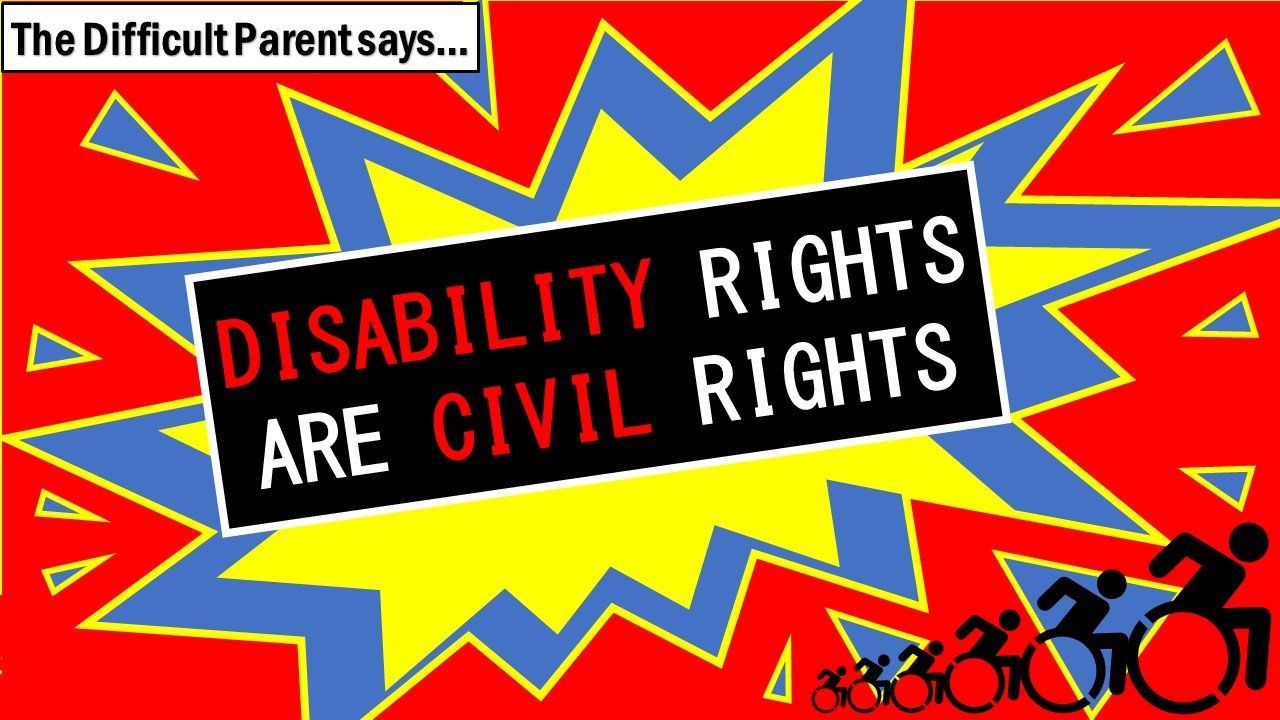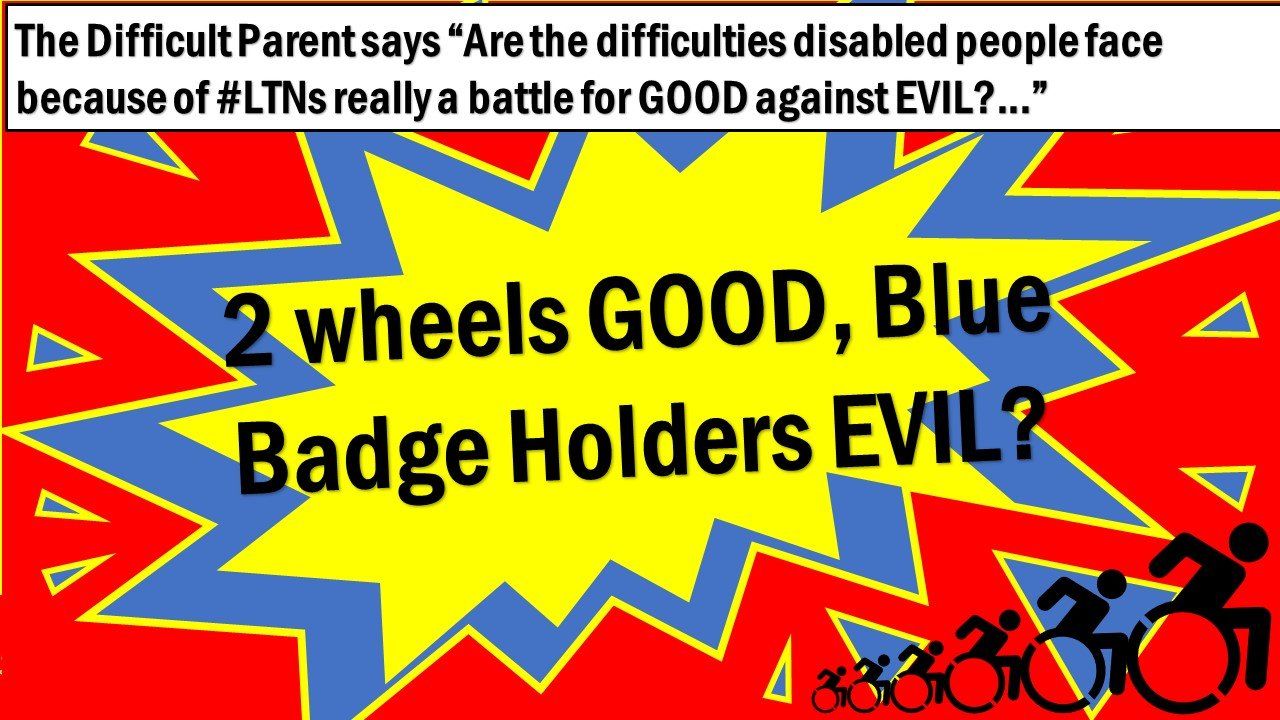Please listen without prejudice: Low Traffic Neighbourhoods and the impact on people with disabilities
- By Brian Leveson
- •
- 31 Aug, 2021
- •
Our families 'lived experience' of transport, travel and low traffic neighbourhoods. Disability is a protected characteristic under the 2010 Equality Act. It is important for all people with protected characteristics to be able to express their lived experiences without fear and prejudice.

Our evidence basis
For our families evidence basis in this response, we draw upon our own lived experience of travelling around London and accessing essential services such as a special school and a range of hospitals that have involved journeys lengthened due to the implementation of Low Traffic Neighbourhoods in other boroughs; we have reviewed Haringey’s Equality Impact Assessments for St Ann’s and Bruce Grove LTNs; we have reviewed Department for Education Statutory Guidance and Transport for London research on Disabled Travellers’ Experiences of Taxi and Private Hire Services in London.
Haringey Equality Impact Assessments ‘do not know’ the actual impacts of LTN’s on disabled people, but we know the impacts on our family.
Haringey Equality Impact Assessments ‘do not know’ the actual impacts of LTN’s on disabled people, but we know the impacts on our family. Haringey’s St Ann’s Equality Impact Assessments states that “the actual impacts of the scheme on journey times, and by extension, on disabled and elderly residents who require access to motor vehicles, are unknown”[i]. Our lived experience of LTN’s in other London broughs is able to add some insight about the actual impact of LTNs on our journeys.
We use motorised vehicles (SEND Transport, taxis and our own wheelchair accessible vehicle, known as a WAV) to access hospital appointments and our child's special school. We currently have approximately one appointment a week of some sort to meet our child’s needs arising from his disability.
Whilst the St Ann’s LTN EIA recognises that “Those with disabilities may have increased GP and hospital appointments and the options may negatively impact on some journey times for those with mobility impairments who may find it more difficult to walk or cycle, and therefore prefer the use of door-to-door transport services such as private cars, taxis, or Dial-a-Ride”. The plans are to reduce traffic through the LTN to create a safer environment for disabled people who are more likely to be pedestrians than driver. There are no seemingly no mitigations nor advantages for disabled people who need to access motorised vehicles to access essential services.
Our child is very severely disabled and requires 24/7 care. Given this, we frequently use London’s Black Cab Taxis to go to and from essential appointments. This is because my child’s complex care needs that arise from his disability demand this. Driving and caring at the same time is stressful and it is impossible to safely divide attention between driving and caring at the same time. Our child’s severe disability completely rules out Tube travel and anyway very few tube stations are fully accessible. Bus travel is also very difficult and given that our child is clinically extremely vulnerable, bus travel is not currently appropriate in the on-going pandemic.
Assumptions about transport use and disabled people under-represented
The assumptions regarding the modes of transport used by disabled people and therefore the ensuing impacts of LTN’s on disabled people travel stated within the Equality Impact Assessment seem contradictory. Haringey’s Equality Impact Assessments for St Ann’s[ii] and Bruce Grove[iii] note that people with disabilities were under represented in Haringey’s design workshops (St Ann’s EIA) and there is an assumption within the documentation that “disabled people who are more likely to be pedestrians” so “The project aims to decrease motor vehicle traffic creating a safer environment, particularly for disabled people”, which seems to directly contradict the statement further down the documentation that “disabled and elderly residents (sometimes overlapping) are more likely to have mobility issues that require motor vehicle transportation”.
In light of this we have reviewed Transport for London’s Disabled Travellers’ Experiences of Taxi and Private Hire Services in London Focus groups debrief[iv] as well as the reality of our own lived experiences of feasible transport choices.
Like us, the focus group finds that some disabled travellers do have issues and difficulties using the bus including drivers seeming lack of awareness of the needs of disabled people can cause problems; Fellow passengers’ attitudes can also cause problems; Lack of queuing at bus stops; Rush towards the bus if it does not stop right outside the bus stop leaving those with mobility and sight problems behind.
TFL found that the disabled traveller's in the focus group had positive experiences of London Black Cab taxi’s that our similar to our own: taxis are important for getting to regular health appointments, which those with disabilities are more likely to have to do; schemes like Taxicard, which give disabled people cheaper access to taxis, are generally considered ‘vital’, ‘great’, by users, despite some operational faults; confidence expressed in the standards and professionalism of taxi drivers versus private hire.
In short, disabled people do not have the same transport choices as non-disabled people. Choices are limited by the nature and severity of a person’s disability. Therefore, increased journey times for motorised vehicles disproportionately impact on [the most severely] disabled people with transport choices limited to only motorised vehicles. This is especially concerning when given the lack of inclusivity and access more broadly in society, so that our journeys with our disabled child are invariably to access essential services rather than for leisure purposes.
Transport arrangements must allow the child to arrive at school ready for a day of study
How were the needs of children with Special Educational Needs and Disabilities considered? We would also like to draw to your attention the requirements in the Department for Education’s Home to school travel and transport guidance, Statutory guidance for local authorities (July 2014)[v], which states that “Best practice suggests that the maximum each way length of journey for a child of primary school age to be 45 minutes and for secondary school age 75 minutes, but these should be regarded as the maximum. For children with SEN and/or disabilities, journeys may be more complex and a shorter journey time, although desirable, may not always be possible… …For arrangements to be suitable, they must also be safe and reasonably stress free, to enable the child to arrive at school ready for a day of study.
We have noticed that the duration of our son’s journey home from school seems to have increased. Where he was previously home at 4pm, because of LTNs introduced in the area surrounding his school, he now comes home 15 minutes to half an hour later.
There are no 'marginal impacts' for people at breaking point
The
mitigations proposed in one of the EIA does not address the adverse impacts of
the LTNs on increased journey times and cost. In
the Bruce Grove EIA it is proposed that two new controlled crossings will be
introduced as part of the Bruce Grove West Green LTN, on Bruce Grove and
Belmont Road.
Appropriate mitigations for people with disabilities needs to be properly considered. In one of the design groups for the LTNs there was “A request for an exemption to allow Blue Badge holders to pass through the modal filters”. This was dismissed because “Currently the options do not allow for Blue Badge holders to pass through the modal filters”.
Our lives are already very difficult caring for a severely disabled person. Carers are suffering. The Nuffield Trust reports[vi] that
- Seven in 10 unpaid carers have provided more care during the pandemic
- two-thirds of all directors of adult social care are seeing an increase in the number of individuals coming to councils with needs that are a result of carer breakdown, illness or unavailability
- more days spent living with pain, anxiety and poor health, leaving many unable to work or take part in everyday activities with family and friend [for carers]
Please mitigate the following
As ‘unpaid family’ carers, for us ‘marginally longer journeys’ (to and from hospital appointments once or twice a month) are already adversely and disproportionately impacting on the time we have for ‘free’ for work or to address our own health and care needs.
To meet our needs arising from caring for a severely disabled person and the needs of the severely disabled person, we would like to see proposals to address:
- The increased travel times for disabled people to and from essential health appointments or school
- The increased cost of journeys
We don't WANT TO own a car
A final thought: as very keen cyclists and being concerned about the health of our planet and the people who live on it, we do not want to own a car. But what is the alternative for us to owning a WAV if we want to meet our child’s transportation needs? Unlike people without the same disabilities, we cannot use services such as minicabs or Zipcar as they have either few or no accessible vehicles. But what if we do not want a car? What is we think, no, a car is not for us? No, if we have car we are contributing to the damage to the planet. Having our own car demands more use of scarce resources during the design, manufacture, use, maintenance, decommissioning and disposal of the car. We can’t go on the Tube, there are so many issues with the bus and the complexities arising for our son’s disability it becomes so prohibitive the bus becomes a non-feasible option; cycling with a wheelchair isn’t safe and isn’t feasible on an incline? What choices do we have? Realistically, some provision needs to be given to London’s fleet of 13 thousand accessible Black Cab Taxis to enable those of us who are unable to access other modes of transport to have feasible alternatives to owning a WAV to meet our transport needs arising from our child's severe disability.
references
[i] Page 33 of St Ann’s LTN Equality Impact Assessment https://www.haringey.gov.uk/sites/haringeygovuk/files/st_anns_ltn_equality_impact_assessment.pdf
[ii] St Ann’s LTN Equality Impact Assessment https://www.haringey.gov.uk/sites/haringeygovuk/files/st_anns_ltn_equality_impact_assessment.pdf
[iii] Bruce Grove LTN Equality Impact Assessment https://www.haringey.gov.uk/sites/haringeygovuk/files/bruce_grove_ltn_equality_impact_assessment.pdf
[iv] http://content.tfl.gov.uk/disabled-taxi-and-private-hire-passenger-focus-group-nov-2016.pdf
[v] Department for Education’s Home to school travel and transport guidance, Statutory guidance for local authorities (July 2014) https://assets.publishing.service.gov.uk/government/uploads/system/uploads/attachment_data/file/5753...
[vi]Plans for social care reform must not leave unpaid carers out in the cold The Nuffield Trust (Blog post July 2021) https://www.nuffieldtrust.org.uk/news-item/plans-for-social-care-reform-must-not-leave-unpaid-carers...










